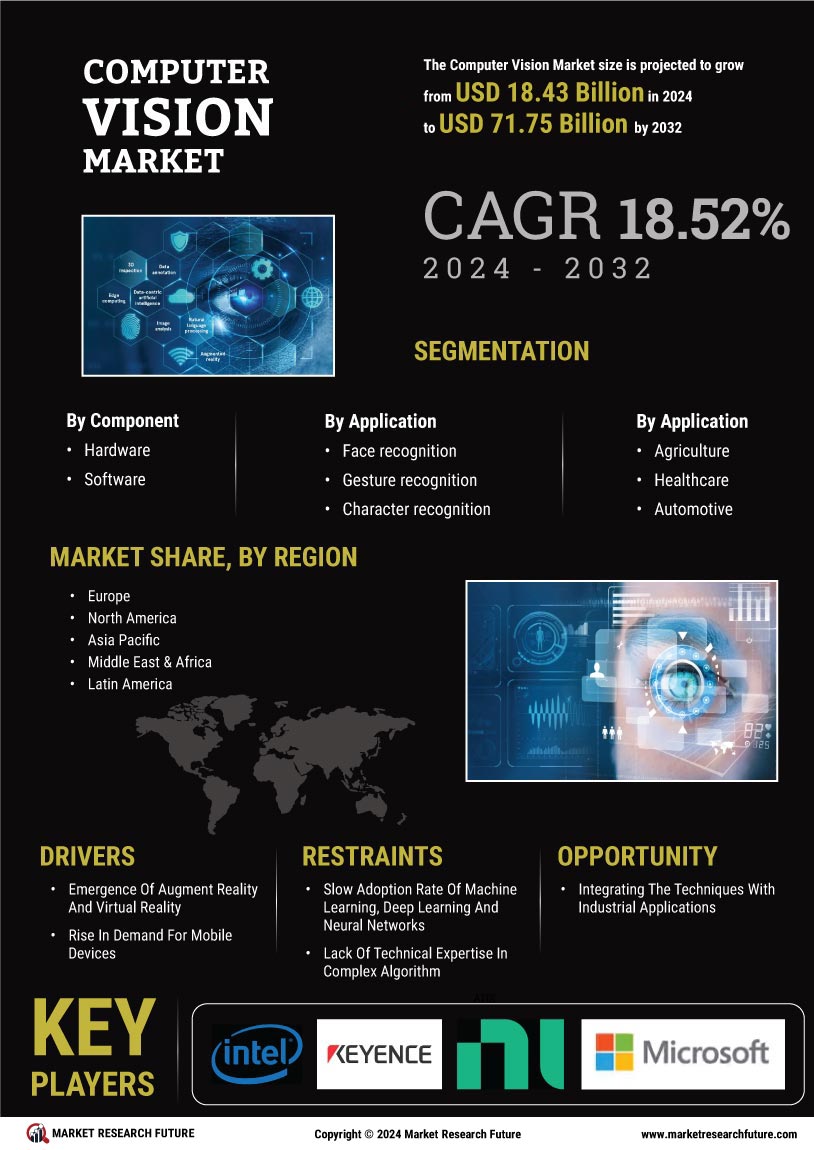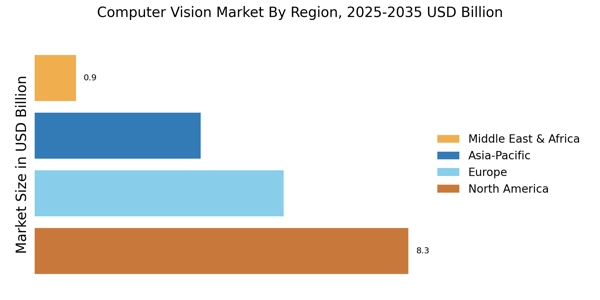The Computer Vision Market is currently characterized by a dynamic competitive landscape, driven by rapid technological advancements and increasing demand across various sectors, including healthcare, automotive, and security. Major players such as NVIDIA (US), Intel (US), and Microsoft (US) are at the forefront, leveraging their strengths in artificial intelligence and machine learning to enhance their offerings. NVIDIA (US) focuses on high-performance computing and graphics processing units, which are pivotal for real-time image processing. Meanwhile, Intel (US) emphasizes its edge computing capabilities, aiming to integrate computer vision into IoT devices. Microsoft (US) is strategically positioning itself through cloud-based solutions, enhancing its Azure platform with advanced computer vision functionalities, thereby fostering a robust ecosystem that supports developers and enterprises alike.
The competitive structure of the Computer Vision Market appears moderately fragmented, with a mix of established tech giants and emerging startups. Key players are adopting various business tactics, such as localizing manufacturing and optimizing supply chains, to enhance operational efficiency and reduce costs. This collective influence of major companies not only shapes market dynamics but also drives innovation, as firms strive to differentiate themselves through unique technological advancements and customer-centric solutions.
In August 2025, NVIDIA (US) announced the launch of its latest AI-powered computer vision platform, which integrates deep learning capabilities to improve object detection accuracy in real-time applications. This strategic move is likely to solidify NVIDIA's position as a leader in the market, as it addresses the growing demand for precision in sectors like autonomous driving and surveillance. The introduction of this platform may also enhance partnerships with automotive manufacturers, further expanding its market reach.
In September 2025, Intel (US) unveiled a new line of vision processing units (VPUs) designed specifically for edge devices. This initiative reflects Intel's commitment to advancing edge computing technologies, which are essential for processing visual data locally, thereby reducing latency and bandwidth usage. The strategic importance of this development lies in its potential to cater to the increasing need for real-time analytics in smart cities and industrial automation, positioning Intel as a key player in the edge computing segment of the computer vision market.
In October 2025, Microsoft (US) expanded its partnership with various healthcare providers to integrate computer vision technologies into telehealth solutions. This collaboration aims to enhance patient monitoring and diagnostics through advanced imaging techniques. The strategic significance of this partnership is profound, as it not only broadens Microsoft's influence in the healthcare sector but also underscores the growing trend of digital transformation in medical services, where computer vision plays a crucial role in improving patient outcomes.
As of October 2025, current competitive trends in the Computer Vision Market are increasingly defined by digitalization, sustainability, and the integration of artificial intelligence. Strategic alliances among key players are shaping the landscape, fostering innovation and collaborative solutions. Looking ahead, competitive differentiation is likely to evolve from traditional price-based competition to a focus on technological innovation, reliability in supply chains, and the ability to deliver tailored solutions that meet the specific needs of diverse industries.


















Leave a Comment